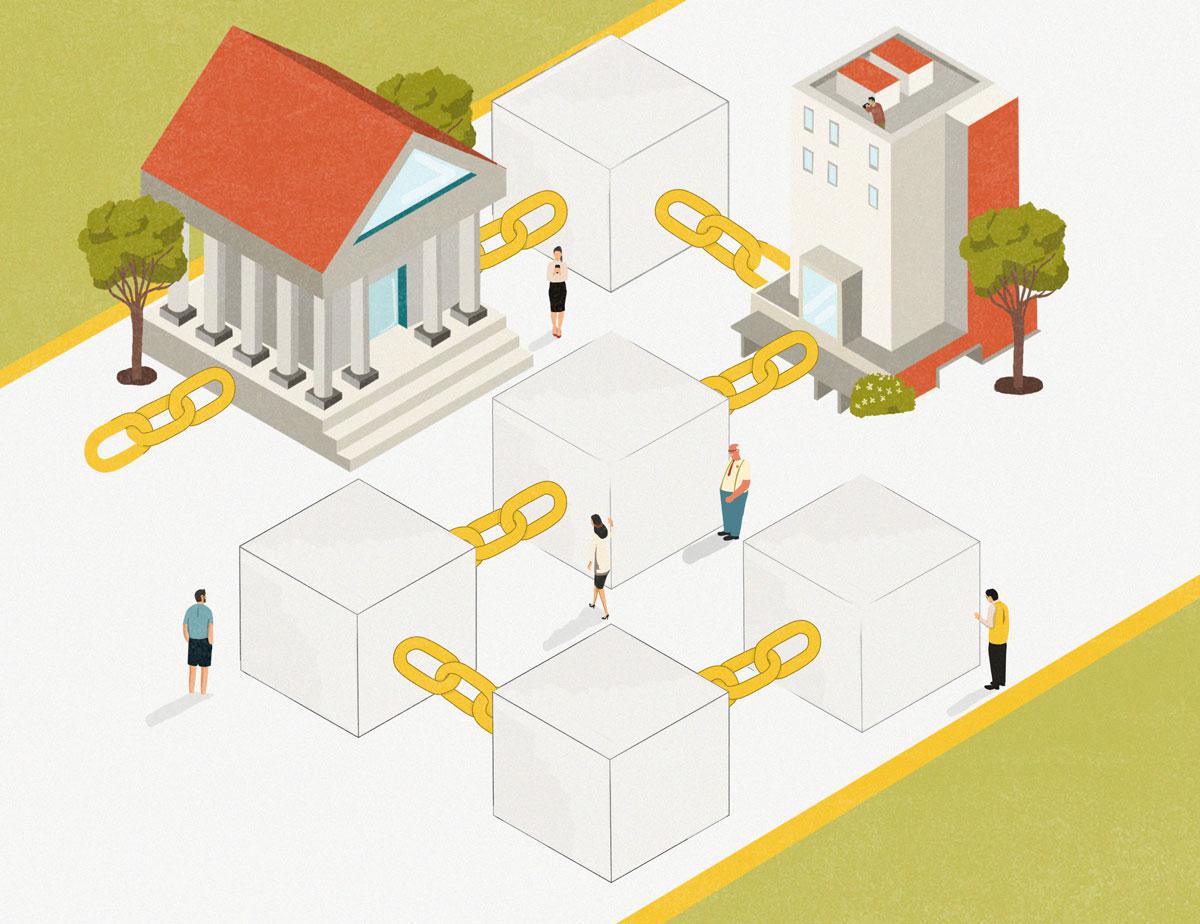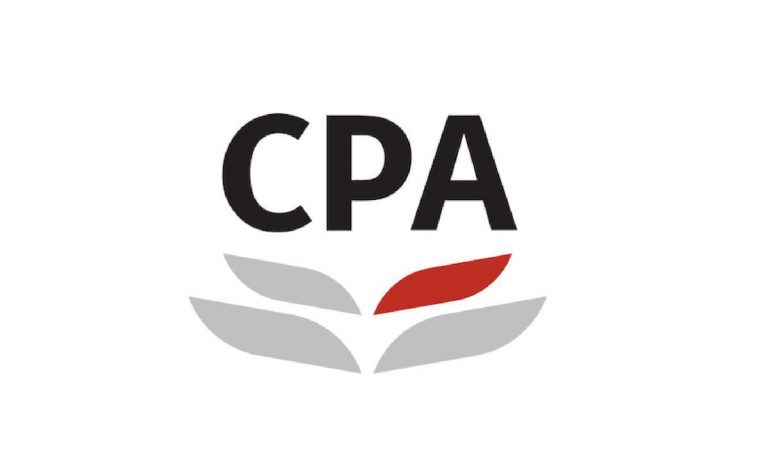In its relatively short life, the usefulness of blockchain technology has broadly been a success. Blockchain first emerged in 2008 as the enabler of Bitcoin, the digital currency that allows transfers of money without the need for an intermediary. But besides using it to handle digital currencies, it was being hailed a technology only a few years ago that would quickly transform many business processes and industries, including the accounting profession. But globally, that is not yet the case. The storm of dramatic predictions has calmed, as complex realities including implementation difficulties, regulation, privacy rules and security concerns have taken a toll on the pace of adoption. In the meantime, though, blockchain has been making itself useful in a range of different commercial environments, often in less visible ways.
It can be helpful to consider blockchain as a type of spreadsheet that allows data to be stored in a way to prevent tampering through blocks that are linked together using codes. In traditional spreadsheets, one person is usually in charge of inputting, editing and removing data. In a blockchain, no single person is in charge, and data can only be viewed or input; it can’t be changed or deleted.
The main attraction of blockchain is that it addresses an age-old problem found in human transactions. “Blockchain solves the issue of trust,” says Peter Woo, Founder of Hong Kong Blockchain Society and Co-founder of EMALI, a fintech company that specializes in blockchain, artificial intelligence (AI) and cryptography. Woo adds that blockchain provides a way to enhance trust among a group of stakeholders who don’t necessarily know each other, but have reached a consensus on how they need to proceed in order to complete a task.
Blockchain also makes life easier for business owners who need to be able to rely on the data of several business partners, explains Adam Stuckert, Partner and Blockchain Lead at KPMG China. “Previously, if you wanted to share data with five or 10 of your ecosystem participants – say you’re a retailer and you need to share data with manufacturers, warehouses, retailers, shippers, logistics – tying your digital system into their digital systems was a one-by-one process,” he says. “Every time you did it, you needed to define the standards and work with that company and so on. Blockchain-based data records allow participants to remove a lot of those complexities. It lets you trust the data without necessarily trusting on a one-by-one basis all the parties that are interacting with it.”
Blockchain in action
Blockchain-based applications are already in use in areas including contract management, healthcare certification, loyalty programmes and banking. One example of how blockchain can be used to solve real world problems is EY and Microsoft’s Blockchain Royalty Application, which allows traditional methods of invoicing for software or intellectual property royalty accounting to be eliminated. The application generates invoices and statements, and allows royalties to be calculated accurately and in real time for each participant, replacing a manual process that used to take 45 days or more to do the same job. The application is also being used to handle license agreement contracts for game publishers such as Microsoft’s Xbox Game Studios. “It is the first enterprise use of blockchain technology as a system of record,” says Benson Ng, Hong Kong Business Consulting Leader at EY, adding that the technology is also progressively eliminating intercompany transaction documentation and reconciliation. “In one case, we took the advantages of blockchain to resolve contract disputes for an oil and gas client with their joint-venture partners,” he says. “More than 2,000 working hours on audit were saved.”
As the COVID-19 pandemic continues to affect economies around the world, certification of health has become a hot topic, as it may be the only way people are able board planes or return to work in the near future. EMALI has been working with Immunodex, a multidisciplinary technology initiative founded by healthcare and tech experts in Hong Kong and Canada, to build digital health certificates (DHC), to show, for example, that a person has tested negative for the virus. “The immunity passport is a trusted, verifiable record of a person who has done the test and has antibodies,” explains Woo. “We have several programmes. One of them is a back-to-work programme, another one is a back-to-school immunity passport and the third is for the airline industry. All of these are ready.”
The DHC, which was launched in June, is a collection of health information on a blockchain issued by an attesting party – such as a medical laboratory or a doctor – verifying that the holder has a low risk of being infected by a disease, as shown by diagnostic assessment or immunization, if available. All data registered on the certificate is owned by the patient and is only shared with other verifying parties with the patient’s consent.
The system has the potential to replace the handwritten self-declaration health forms that are being used widely at venues and airports, and paper-based diagnostic test results issued by a hospital or testing site, says Chloe Chan, Programme Director at Immunodex. “Currently, there is no way to present this information in a way where we can absolutely trust its authenticity,” she says. “This is where blockchain comes in. It is a way to ensure that information is unaltered from its original state and issued by trusted parties to begin with, such as an approved testing site or hospital.”
Sustainability is another area where blockchain is being used, and one that is likely to grow as part of a growing focus in environmental, social and governance (ESG) reporting. In late September, the World Economic Forum released a new reporting framework for ESG metrics and disclosures that all companies can use to report their non-financial disclosures and their contributions to the sustainable development goals. The measures, organized around the pillars of principles of governance, planet, people and prosperity, were developed by the World Economic Forum, Bank of America and the Big Four. The move aims to encourage about 130 major international companies to adopt the standards for their 2021 accounts.
KPMG’s Stuckert says blockchain can help with this kind of reporting. “One of the classic problems is when we want to ensure that companies in a supply chain, say for garment manufacturing or production of industrial goods, are treating workers and the environment well, we have to go on the word of suppliers,” he says. “Maybe we can hire a firm to go and audit that supplier once a quarter or once a year, or maybe they have some certifications, but it’s very difficult to prove that it’s always the case, that they’re always giving workers good conditions. This is an area that we in KPMG are working on.”
In practical terms, blockchain can be used to keep track of temperature levels in garment factories located in hot countries, such as Bangladesh and Indonesia, where air conditioning is needed, says Benjamin Usinger, Co-Lead for KPMG’s Blockchain and Crypto Advisory Service in Hong Kong. “For example, what happens, unfortunately, is that air conditioners are only turned on when an audit is happening or someone from the producer side comes in,” he explains. To counter that, small temperature sensors can be installed to monitor temperature levels constantly. “With a blockchain as the underlying data record, we can track and have a perfect audit trail that those conditions have been met throughout the year, and the ESG auditors can focus on more quality interaction with the workers.”
“In one case, we took the advantages of blockchain to resolve contract disputes for an oil and gas client with their joint-venture partners,” he says. “More than 2,000 working hours on audit were saved.”
Blockchain and audit
A few years ago, predictions were rife about the sweeping changes that blockchain would bring to the profession, particularly in audit, but so far changes have been modest. Is the speed of technology really outpacing changes being made in auditing standards? “Businesses are still in the early stages of technology adoption – for example, invoices still need to be issued, except that the details may be uploaded to a distributed ledger rather than sending the physical invoice via mail or email,” says William Gee, Partner, Digitalization, PwC China and Hong Kong and a member of the Hong Kong Institute of CPAs. “That being said, existing auditing standards and guidelines have not been updated to address how digital documents should be audited and retained. As the information is on an immutable chain, technically the auditor no longer needs to take a copy as audit evidence. The advance in technology and the update of auditing standards and guidelines are not in sync, and thus we are unlikely to feel the full impact on audits until such time as the profession re-examines the core principles and standards.”
More needs to be done to update auditing standards and two key aspects need to be considered, Gee says. “The first is the need to review existing standards for the audit of financial reports, as some of these may not necessarily apply in circumstances where emerging technologies are used. An example could include determining whether data on a blockchain is inherently reliable for audit purposes, or if the use of a public blockchain constitutes reliance on a “third party service organization” – my view is that this is not the case. The second is in relation to the other assurance engagements – for example, Hong Kong Standard on Assurance Engagements (HKSAE) 3000 – where one or more sets of “criteria” should be developed to cater for the use of emerging technology such as blockchain.”
Where it has had an impact is in pushing practitioners to upskill its practitioners to meet the demands of blockchain as well as other technologies, such as the Internet of Things, AI and robotics, in preparation for the potential for role changes in the profession. “Accountants’ traditional role as trusted advisors could be eroded as new industries and new business orders emerge,” Gee says. Until now, accountants have provided trust by issuing reports, such as on a set of financial statements. Now, though, increasing use of new technology is leading to new areas where trust and assurance may be needed, such as the “smart contracts” used in some blockchain platforms to automate one or more processes. “As of today, none of the organizations offering “smart contract audits” are professional accounting firms,” says Gee. “There are two reasons for this: the lack of a suitable set of criteria that is required under HKSAE 3000, and its global equivalent, and the lack of the necessary technical capability to undertake such a review or audit.”
The changes taking place are happening “progressively” and the amount of time saved by eliminating intercompany transaction documentation and reconciliations are notable, says EY’s Ng. The technology is proving effective, but adoption is not happening quickly. “The progress of change is not as fast as what we expect, as it needs a major portion of business on trade networks to adopt blockchain to make the shift worthwhile,” adds Ng.
Barriers to blockchain
Other hindrances are also slowing the pace of adoption. As with other technological advances, disruption to current business processes is a major barrier to full implementation of blockchain, say Ng and Gee. “The challenge to any technology adoption is the integration with business operations, but for blockchain adoption, there is an added dimension: the ability and willingness to redefine the industry,” says Gee. “As of today, few adoption efforts are demonstrating this aspect, with the exception of DeFi or decentralized finance, being a completely new domain, and consequently, we are yet to see the full disruptive impacts of the blockchain technology.”
Echoing Gee, Ng foresees changes to traditional roles in the profession. “Current industry leaders could see their dominant positions challenged,” he says. “As with any new system of automation, some business services, jobs and career paths could also become obsolete, while new ones could be created.”
Blockchain’s widespread adoption could cause disruption to regulation by necessitating important amendments to finance and trading regulations. While regulators are rising to the new challenges of the digital age in some areas – for example, the European Union’s General Data Protection Regulation is a wide ranging regulation that came into force in 2018 to protect data and privacy – blockchain poses more challenges, Ng says. “Financial service providers also need to work with regulators and central banks to ensure the innovation and regulation works in harmony with existing legal and regulatory frameworks, not least because blockchain, like the Internet, transcends regulatory jurisdictions and national borders,” Ng says.
Security and privacy protection are other sources of concern. Major hacks of large organizations have already lead to huge amounts of personal, financial and health data being leaked or stolen, creating widespread public concern. Deloitte’s report, Blockchain 2020: From promise to reality, says that blockchains are subject to the same risks of hacking that have plagued legacy systems, because “attacks can emanate from anywhere at key access points to the blockchain system.”
PwC’s Gee says two major scenarios will test blockchain’s resilience and the potential for its future adoption: “Legal enforceability – whether transactions conducted on a blockchain network are enforceable – in the event of a dispute, and whether it is acceptable for auditors to place reliance on public blockchain platforms without performing any audit procedures on such platforms.”
“The challenge to any technology adoption is the integration with business operations, but for blockchain adoption, there is an added dimension: the ability and willingness to redefine the industry.”
Future potential
In banking processes, each financial institution currently maintains its own ledgers to record their own view of agreements and positions with respect to its customers and counterparts, explains Immunodex’s Chan. Each counterpart, in turn, maintains their own ledgers with their views. This duplication can lead to inconsistencies, leading to costly matching, reconciliation and fixing of errors by and among the various parties to a transaction, as well as being a source of risk.
Blockchain technology offers to the opportunity to replace this system with an authoritative record system that is shared securely between firms. “The vision is to transform the economics of financial firms, particularly but not exclusively in post-trade services, by implementing a new shared platform for the recording of financial events and processing of business logic: one where a single global logical ledger is authoritative for all agreements between firms recorded on it,” says Chan.
Broader signs of adoption of blockchain are appearing on the horizon. Ng at EY says many companies in Mainland China, particularly Internet companies, are already adopting blockchain-based supply chain finance to solve financing issues. “Blockchain ensures the credibility, traceability and trustworthiness of information from small- and medium-sized suppliers or distributors, in exchange for them to get financing and easier access to capital,” he says. “Once they have a more efficient financial ecosystem, companies can get access to the proprietary data from these small- and medium-sized suppliers, and benefit from tighter control over their entire supply chain.”
Ng gives an example of a telecommunications equipment company that sources chips, power supply, displays and cases from suppliers. “Chip suppliers will draw capital or loans from a bank based on the telco equipment company’s purchase order as collateral and use it to fund materials, labour and lab facility needed to design and manufacture the chips,” he says. “Blockchain can facilitate the bank to access the validated, controlled and full credibility history (in the form of a blockchain distributed ledger) of chip suppliers from its telco equipment and other customers. Hence, this establishes trust on business performance of the chip suppliers to provide higher credit line and better credit terms. With blockchain, this can all be done electronically in minutes or hours instead of having suppliers, customers and bank exchange certified documents in days or weeks.”
Trade finance is one of the areas that is starting to be explored, and some results are impressive, says KPMG’s Stuckert. “Now, we’re starting to settle into that period where cases that were developing over the last three to five years are starting to gain real traction and have an impact on businesses. In trade finance, most if not all of the banks are working on platforms here. One bank was able to create a trade finance platform using blockchain technology underneath. The blockchain technology facilitated the transfer of what was formerly paper documents and reduced the processing time from up to a month down to a few hours or less.”
Experts see blockchain’s potential for greater and deeper changes. “In the era of globalization being challenged and unilateralism rising, blockchain can help build a better future by being the cornerstone of “coopetition” – cooperative competition – in a multilateral world,” says EY’s Ng. “Blockchain’s distributed ledger can become a distributed policy to help establish trust among “coopetitive” nations, corporations and individuals. Blockchain’s smart contract can assure transparency and social responsibility of trade.”
It’s future impact could transform financial services, says Gee. He says its power lies in the way it combines technological features to solve business challenges, as shown in the conception of Bitcoin. “Blockchain is native to all things digital, and can therefore be deployed hand-in-hand with other existing or emerging technologies to create real impact (and disruption) to current business orders. Then there is the financial aspect of blockchain application: distributed finance; digital assets, and so on, which is likely to create significant and lasting impact to the entire financial services sector as we know today.”
According to Deloitte’s report, Blockchain 2020: From promise to reality, which polled about 1,500 senior executives and practitioners in 14 countries in the first quarter of the year, 55 percent of respondents said blockchain was one of their top five strategic priorities for the next two years. “Leaders no longer consider the technology groundbreaking and merely promising, they now see it as integral to organizational innovation,” says the report. More than 85 percent of respondents saw a strong business case for adopting blockchain technology, though 54 percent also said “blockchain is overhyped.”



















